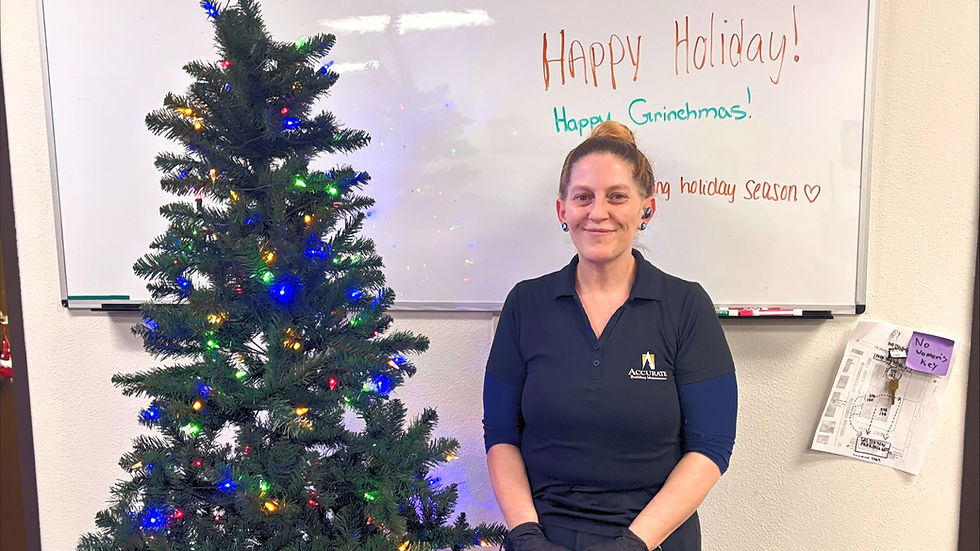Defining Sustainability for Paints and Coatings is Our New Standard
- Accurate Building Maintenance

- Oct 12, 2021
- 2 min read

Green Seal's Standard for Paints, Coatings, Stains, and Sealers (GS-11) has been rewarding leading manufacturers for low-VOC content, safer formulas, and effective functional performance since it was first issued in 1993.
Now, Green Seal’s paint certification is the only mark in the marketplace to qualify products for both LEED v4.1 low-emitting materials credit requirements and Amazon’s Climate Pledge Friendly badge — making it simple for health-focused buyers to identify safer products.
Working with Pain Industry Leaders
The North American paints and coatings industry has made major strides in green chemistry innovation in tandem with growing market demand for healthier, greener products. Leading manufacturers have achieved significant reductions in VOC content and hazardous chemical ingredients while maintaining the performance consumers expect. Green Seal’s original leadership standard for paints and coatings, published in 1993, was the first to set limits on VOCs. Today, Green Seal’s is still the only standard in this product category to restrict carcinogens, reproductive toxins, hazardous air pollutants, alkylphenol ethoxylates, and a host of other chemicals, ensuring certified products are safer for building occupants while providing uncompromising functional performance. Manufacturer investments and innovations have led to safer supply chains and improved air quality around the world. Case in point: In 2020, paints and coatings meeting Green Seal’s leadership standard prevented more than half a million pounds of VOC pollution across 120 million square feet of LEED-certified building space alone.
Aligning with LEED to Provide Buyers a Simple Choice
Green Seal regularly evaluates our standards for accuracy and relevance to ensure they correctly define sustainability leadership in an evolving marketplace. The updated standard protects indoor air quality; ensures certified products are safer for people and the planet; and aligns with the most recent version of the LEED green building standard (LEED v4.1), a key market driver.
The standard's three key updates are:
Strengthening VOC Content Limits. All products must comply with the VOC limits defined by the California Air Resources Board (CARB). CARB VOC limits reduce the potential for the formation of photochemical ozone and smog, which can cause serious respiratory issues.
Requiring VOC emissions testing. Products must undergo VOC emissions testing conducted in an environmental chamber according to the State of California’s Department of Public Health Standard Method (CDPH). This test allows Green Seal to confirm low levels of off-gassing after paints are applied, increasing health protections for building occupants and promoting overall healthier indoor environments.
Aligning two chemical restrictions with LEED language. A clarification that perchloroethylene and methylene chloride — which Green Seal prohibited in certified products decades ahead of government regulation — are not allowed to be intentionally added to product formulas at any level.
Products certified to Green Seal's revised standard meet both the chemical content and VOC emissions testing requirements of LEED v4.1, making it easy for green building project managers to identify products that check all the boxes.
Original Article written by Brie Welzer
Contact our Team Today and Be Clean Tomorrow
Accurate Building Maintenance




Comments